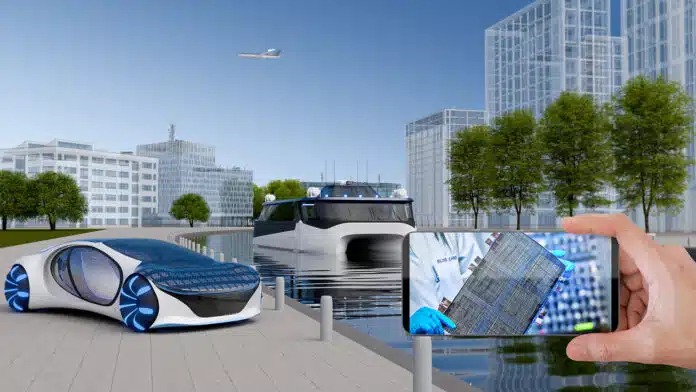Wednesday, 07/01/2026 | 09:29 GMT+7
The research group has made significant advancements in enhancing both the stiffness and energy density of their battery concept. In 2021, they achieved a milestone energy density of 24 watt-hours per kilogram (Wh/kg), equivalent to about 20 percent of a comparable lithium-ion battery. Now, they have pushed this figure to 30 Wh/kg.
While still lower than current batteries, this achievement is notable due to the context in which the battery operates. When integrated into the structure and made from lightweight materials, it contributes to a substantial reduction in overall vehicle weight. Consequently, less energy is needed to power electric vehicles.
“Investing in light and energy-efficient vehicles is a matter of course if we are to economize on energy and think about future generations. We have made calculations on electric cars that show that they could drive for up to 70 percent longer than today if they had competitive structural batteries,” says research leader Leif Asp, who is a professor at the Department of Industrial and Materials Science at Chalmers.

A structural battery that could halve the weight of a laptop. Credit: Chalmers University of Technology
In the realm of vehicles, the demand for designs to meet safety requirements is paramount. The research team’s structural battery cell has significantly boosted its stiffness, with the elastic modulus rising from 25 to 70 gigapascals (GPa). This means the material can withstand loads as effectively as aluminum but with reduced weight.
“In terms of multifunctional properties, the new battery is twice as good as its predecessor – and actually the best ever made in the world,” says Leif Asp, who has been researching structural batteries since 2007.
The ultimate aim has always been to achieve a level of performance that enables the technology to be brought to the market. Simultaneously, ongoing research efforts are bolstering our connection to the market through the establishment of Sinonus AB, a new Chalmers Venture company based in Borås, Sweden.
Nevertheless, significant engineering endeavors lie ahead to transition the battery cells from small-scale lab production to large-scale manufacturing for use in our technological devices and vehicles.
“One can imagine that credit card-thin mobile phones or laptops that weigh half as much as today are the closest in time. It could also be that components such as electronics in cars or planes are powered by structural batteries. It will require large investments to meet the transport industry’s challenging energy needs, but this is also where the technology could make the most difference,” says Leif Asp, who has noticed a great deal of interest from the automotive and aerospace industries.
The development of structural batteries marks a revolutionary advancement in energy storage technology. These innovative materials not only store energy but also have the ability to carry loads, making them an integral part of the construction material in various products. This breakthrough has the potential to significantly reduce the weight of electric cars, drones, handheld tools, laptops, and mobile phones.

World’s strongest battery paves way for light, energy-efficient vehicles. Credit: Chalmers University of Technology
The study authors, Richa Chaudhary, Johanna Xu, Zhenyuan Xia, and Leif Asp from Chalmers University of Technology, have presented a battery concept based on a composite material with carbon fiber serving as both the positive and negative electrodes. This innovative design replaces the previous aluminum foil core in the positive electrode.
The multifunctional carbon fiber in the electrode material serves as a reinforcement, an electrical collector, and an active material in the anode while also acting as a reinforcement, current collector, and scaffolding for lithium in the cathode. Notably, the carbon fiber conducts the electron current, reducing the need for current collectors made of copper or aluminum, thereby further minimizing the overall weight. Furthermore, the chosen electrode design eliminates the need for conflict metals such as cobalt or manganese.
In this groundbreaking battery, lithium ions are transported through a semi-solid electrolyte, enhancing safety and reducing the risk of fire in the battery cell. However, further research is necessary to achieve high power delivery. This design not only improves the efficiency of energy storage but also enhances the safety of the battery cell through reduced risk of fire.
According to Techexplorist








 Webinar 2: “Financial Support for Energy Efficiency Enterprises – Opportunities and Challenges”
Webinar 2: “Financial Support for Energy Efficiency Enterprises – Opportunities and Challenges”
 Capacity Building for Program Implementing Entity
Capacity Building for Program Implementing Entity
 Vietnamese enterprises achieve green growth and cut costs through energy efficiency
Vietnamese enterprises achieve green growth and cut costs through energy efficiency
 Enhance Energy Efficiency Knowledge for Managers of Cement Industrial Enterprises
Enhance Energy Efficiency Knowledge for Managers of Cement Industrial Enterprises
 Capacity building for participating financial institutions in Ho Chi Minh City
Capacity building for participating financial institutions in Ho Chi Minh City
 Strengthening capacity for energy management officers of local government agencies
Strengthening capacity for energy management officers of local government agencies
 Steel Enterprises Saving Energy and Enhancing Competitiveness
Steel Enterprises Saving Energy and Enhancing Competitiveness